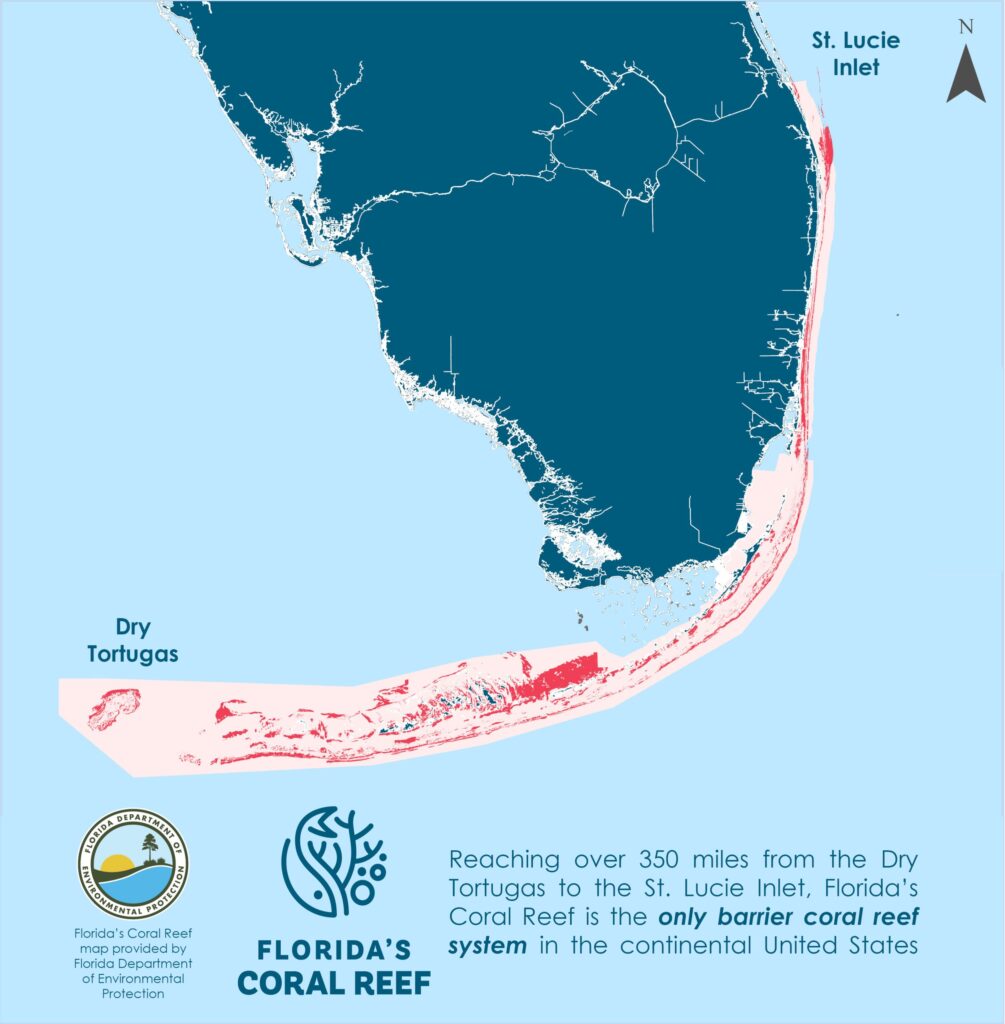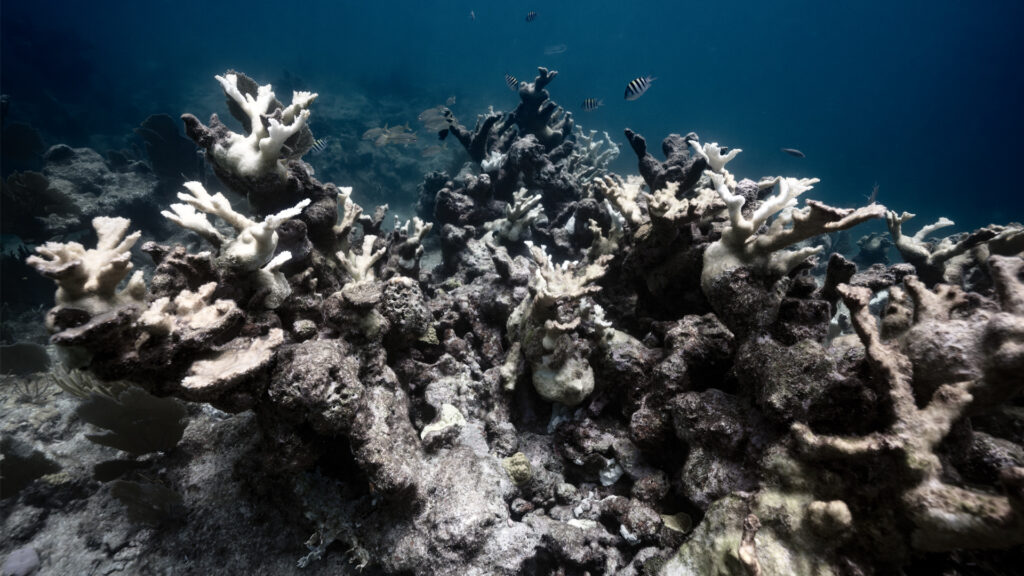By Rafe Pomerance, Upper Limit Project; and Brian Lee, ReThink Energy Florida
The impacts of climate change are accelerating and hitting close to home — President Donald Trump’s home, that is.
The National Oceanic and Atmospheric Administration (NOAA) recently reported that the largest coral bleaching event on record is impacting 84% of the world’s reefs, spanning at least 83 countries and territories, including the U.S. Still, the president continues to look the other way, even from his home at Mar-a-Lago in Palm Beach.

Mar-a-Lago is literally built on top of Florida’s Coral Reef, which stretches roughly 350 linear miles from the Florida Keys to the St. Lucie Inlet in Martin County. The reef is one of the state’s most highly valued assets. In Palm Beach County alone, natural and artificial reefs generate over $280 million dollars per year and support nearly 3,000 jobs annually.
Recreational diving, snorkeling and fishing contribute to the total tourism value of the coral reef, estimated at $1.1 billion a year, according to the Florida Department of Environmental Protection. The reef annually supports 71,000 jobs in South Florida.
Commercial fishers land nearly 3.2 million pounds of reef fish in Southeast Florida, totaling more than $10 million. Reef habitats support aquatic plants and animals, allowing young marine life to develop.
Healthy and resilient coral reefs protect against extreme weather, loss of property and coastal flooding. Florida’s Coral Reef provides more than $355 million a year in flood protection benefits to buildings and preserves nearly $320 million in annual economic activity.
Reefs protect us because they absorb wave energy, helping to prevent loss of life, property damage and erosion during extreme weather events such as hurricanes. In 2023, the U.S. Geological Survey reported that projected coral reef degradation in Florida could increase the coastal flood risk to more than 7,300 people at the cost of $823.6 million annually.
Florida’s Coral Reef suffered severe bleaching as ocean water temperatures exceeded 87 degrees F in 2023. Some recovery took place from the cooling effect of La Niña the following year. Nonetheless, ocean heating from climate change is on an upward trajectory and Florida’s corals are, overall, in decline.

The reef’s healthy coral cover has fallen 90% since the late 1970s, according to NOAA estimates reported in September 2024. This is likely due to a combination of factors, including disease, heat stress, sediment and nutrient pollution, development, hurricanes and damage from boats.
The world is on track to exceed the Paris Agreement target of 1.5 degrees C and, unless greenhouse gas emissions are significantly reduced and substantial amounts of CO2 are removed from the atmosphere, global average temperature will reach or exceed 2.7 degrees C above pre-industrial levels by 2100. In this event, 99% of the world’s coral reefs are likely to die off, according to the Intergovernmental Panel on Climate Change.
To buy reefs a little extra time, scientists are breeding both algae and corals to withstand more heat; some of this work is taking place in Florida. But as oceans heat up more rapidly than expected, researchers are racing against the clock.
Gov. Ron DeSantis’ proposed budget for fiscal year 2025-26 includes $26.2 million for coral reef protection and restoration. But if that expenditure is approved by the Florida Legislature, it may come to naught, as NOAA is a critical partner in the Florida Department of Environmental Protection’s Coral Reef Conservation Program.

President Trump’s proposed FY2025 budget includes a 42% reduction in funding for NOAA’s Coral Reef Conservation Program, which supports coral reef monitoring, restoration and community resilience initiatives. We urge the president to use the Coral Reef Task Force as an opportunity to withdraw his proposed elimination of NOAA’s Office of Oceanic and Atmospheric Research and reduction of funding for NOAA’s Coral Reef Conservation Program.
While he is at it, he can reverse a recent announcement by Secretary of State – and fellow Floridian – Marco Rubio that he is axing the Office of Global Change, which oversees international climate change negotiations for the United States. Because, if he opens his eyes, he will see global climate change impacts lapping at Florida’s shore.
Rafe Pomerance is a former deputy assistant secretary of state and has been a climate advocate for over 40 years. He is an advisor to the Upper Limit Project. Brian Lee is a cofounder of and campaigns director at ReThink Energy Florida and has been involved in climate and environmental advocacy for 15 years. Banner photo: Biscayne National Park (NPS image by Shaun Wolfe).
Sign up for The Invading Sea newsletter by visiting here. To support The Invading Sea, click here to make a donation. If you are interested in submitting an opinion piece to The Invading Sea, email Editor Nathan Crabbe at nc*****@*au.edu. To learn more about coral bleaching, watch the video below.



